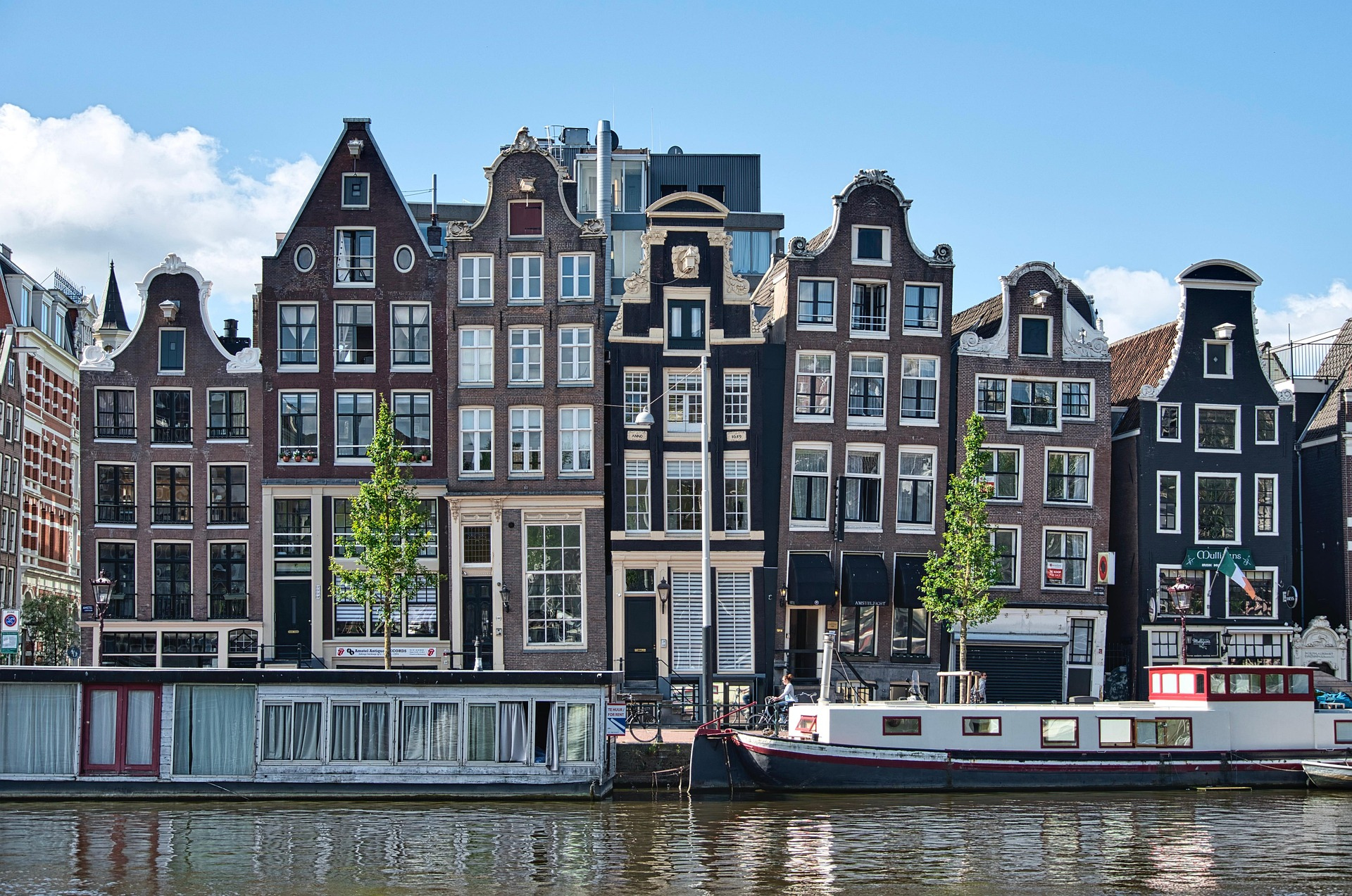Amsterdam, the capital city of the Netherlands, is renowned for its picturesque canals, historic architecture, and progressive urban policies. In recent years, the city has emerged as a global leader in sustainable transportation, with electric vehicles (EVs) playing a central role in its vision for a greener future. As the world grapples with climate change and the need to reduce carbon emissions, Amsterdam’s embrace of electric mobility offers a blueprint for other cities aiming to transition to cleaner transportation systems.
Amsterdam’s Commitment to Sustainability
Amsterdam’s journey toward becoming an EV-friendly city is rooted in its broader commitment to sustainability. The city has set ambitious goals to reduce carbon emissions and improve air quality, with a target of becoming carbon-neutral by 2050. Transportation, which accounts for a significant portion of greenhouse gas emissions, has been a key focus area. By promoting the adoption of electric vehicles, Amsterdam aims to reduce its reliance on fossil fuels and create a cleaner, healthier urban environment.
The Dutch government has also played a crucial role in supporting this transition. Generous subsidies, tax incentives, and investments in charging infrastructure have made it easier for residents and businesses to switch to electric vehicles. Additionally, Amsterdam has implemented policies to discourage the use of petrol and diesel vehicles, such as low-emission zones and higher parking fees for conventional cars.
The Rise of Electric Vehicles in Amsterdam
The adoption of electric vehicles in Amsterdam has grown exponentially over the past decade. According to recent statistics, EVs now account for a significant share of new car registrations in the city. This surge in popularity can be attributed to several factors:
- Extensive Charging Infrastructure: Amsterdam boasts one of the most comprehensive EV charging networks in the world. With thousands of public charging stations scattered across the city, EV owners can easily find a place to recharge their vehicles. The city has also introduced smart charging solutions, allowing users to reserve charging spots and pay through mobile apps.
- Government Incentives: The Dutch government offers a range of incentives to encourage EV adoption. These include tax exemptions, purchase subsidies, and reduced road taxes for electric vehicles. Such policies have made EVs more affordable and attractive to consumers.
- Environmental Awareness: Amsterdam’s residents are known for their strong environmental consciousness. Many people are motivated to switch to electric vehicles as a way to reduce their carbon footprint and contribute to the city’s sustainability goals.
- Innovative Mobility Solutions: Amsterdam has embraced innovative mobility solutions, such as electric car-sharing services and electric taxis. Companies like We Drive Solar and Tesla have introduced electric car-sharing programs, providing residents with convenient and eco-friendly transportation options.
Types of Electric Vehicles in Amsterdam
Amsterdam’s electric vehicle ecosystem is diverse, encompassing a wide range of vehicle types to meet the needs of its residents and businesses. The most common types of EVs in the city include:
- Electric Cars: Fully electric cars, such as the Tesla Model 3, Nissan Leaf, and Volkswagen ID.3, are increasingly popular among Amsterdam’s residents. These vehicles offer zero tailpipe emissions and are ideal for urban commuting.
- Electric Bikes (E-Bikes): E-bikes have become a staple of Amsterdam’s transportation landscape. They provide an efficient and eco-friendly alternative to traditional bicycles, especially for longer commutes or hilly areas. The city has invested in dedicated bike lanes and parking facilities to support the growing number of e-bike users.
- Electric Scooters and Mopeds: Electric scooters and mopeds are a common sight on Amsterdam’s streets. They are particularly popular among younger residents and tourists, offering a convenient way to navigate the city’s narrow streets and canals.
- Electric Public Transport: Amsterdam’s public transport system is also transitioning to electric power. The city’s buses and trams are gradually being replaced with electric models, reducing emissions and improving air quality. GVB, Amsterdam’s public transport operator, has committed to operating a fully electric bus fleet by 2025.
- Electric Delivery Vehicles: With the rise of e-commerce, electric delivery vans and trucks have become essential for last-mile logistics in Amsterdam. Companies like DHL and UPS are increasingly using electric vehicles to reduce their carbon footprint and comply with the city’s low-emission zone regulations.
Charging Infrastructure in Amsterdam
Amsterdam’s extensive and well-planned charging infrastructure is a key factor in the city’s success in promoting electric vehicles. The city has implemented a multi-faceted approach to ensure that EV owners have access to convenient and reliable charging options. Key features of Amsterdam’s charging infrastructure include:
- Public Charging Stations: Amsterdam has one of the highest densities of public charging stations in the world. As of 2023, the city boasts over 5,000 public charging points, with plans to expand this number further. These stations are strategically located in residential areas, commercial districts, and near major transportation hubs.
- Fast Chargers: To cater to the growing demand for quick charging, Amsterdam has installed numerous fast chargers across the city. These chargers can replenish an EV’s battery to 80% capacity in as little as 30 minutes, making them ideal for drivers on the go.
- Smart Charging Solutions: Amsterdam is at the forefront of smart charging technology. The city has implemented systems that allow EV owners to reserve charging spots, monitor charging status, and pay through mobile apps. Smart charging also helps balance the load on the electrical grid by optimizing charging times based on energy demand.
- Residential Charging: Recognizing that many EV owners prefer to charge their vehicles at home, Amsterdam has made it easier for residents to install private charging stations. The city offers subsidies and streamlined permitting processes to encourage the adoption of home charging solutions.
- Integration with Renewable Energy: Amsterdam is working to integrate its charging infrastructure with renewable energy sources, such as solar and wind power. This not only reduces the carbon footprint of EVs but also ensures a sustainable and reliable energy supply for the city’s growing fleet of electric vehicles.
Challenges and Opportunities
While Amsterdam has made significant progress in promoting electric vehicles, challenges remain. One of the primary concerns is the strain on the city’s electrical grid caused by the growing number of EVs. To address this issue, Amsterdam is investing in smart grid technology and renewable energy sources, such as solar and wind power, to ensure a stable and sustainable energy supply.
Another challenge is the need for continued investment in charging infrastructure. As the number of EVs on the road increases, so does the demand for charging stations. The city is working to expand its network of fast chargers and integrate charging facilities into existing infrastructure, such as parking garages and residential buildings.
Despite these challenges, the opportunities presented by electric vehicles are immense. Amsterdam’s transition to electric mobility has the potential to create new jobs, stimulate innovation, and position the city as a global hub for sustainable transportation. The success of its EV initiatives could inspire other cities to follow suit, accelerating the global shift toward cleaner and more efficient urban mobility.
A Model for the Future
Amsterdam’s approach to electric vehicles demonstrates how cities can lead the way in addressing climate change and promoting sustainable urban living. By combining policy support, infrastructure investment, and public engagement, the city has created an environment where electric mobility can thrive.
As the world continues to confront the challenges of climate change and urbanization, Amsterdam’s experience offers valuable lessons for other cities. The transition to electric vehicles is not just about reducing emissions; it’s about reimagining urban spaces, improving quality of life, and building a more sustainable future for generations to come.
In conclusion, Amsterdam’s embrace of electric vehicles is a testament to the city’s forward-thinking approach and commitment to sustainability. By prioritizing clean transportation and investing in innovative solutions, Amsterdam is paving the way for a greener, more sustainable future—one electric vehicle at a time.



Pingback: Electric Vehicles in Agra: A Complete Guide - Tech Master Online